In the last post, we started taking a look at the VMware vSphere 6.7 Update 1 upgrade process. For many environments, this may include updating various VMware products according to VMware’s recommended upgrade order that has been well documented. For a number of environments, this may only include updating VMware vCenter Server VCSA appliance and also the ESXi hosts running the hypervisor. As we covered, this generally begins with the upgrade of the VCSA appliance. In the case of a simple environment running vCenter and the ESXi hosts, after upgrading vCenter, the ESXi hosts themselves need to be upgraded.
In this post, we will take a look at upgrading VMware ESXi to vSphere 6.7 Update 1 and see the process to perform this using Update Manager, including adding the ESXi ISO image for vSphere 6.7 Update 1 as well as creating the baseline for applying the update to the ESXi hosts.
Upgrading VMware ESXi to vSphere 6.7 Update 1
One of the major achievements of vSphere 6.7 Update 1 is the introduction of the fully functional HTML 5 UI.
The new HTML 5 interface is a joy to work with. This is certainly evident when working with the Update Manager component of the vSphere client. The process to work with the Update Manager interface, uploading images, creating baselines, attaching baselines, and remediating hosts are extremely easy and intuitive.
Let’s step through the process and screens of the normal process to upload the vSphere 6.7 Update 1 ESXi image, create the baseline, attach the baseline to the ESXi hosts in our environment, and then remediate the hosts per the attached upgrade baseline.
The first thing that we need to do is upload the new ESXi 6.7 ISO. To do this navigate in the HTML 5 client to Update Manager >> ESXi Images >> Import.
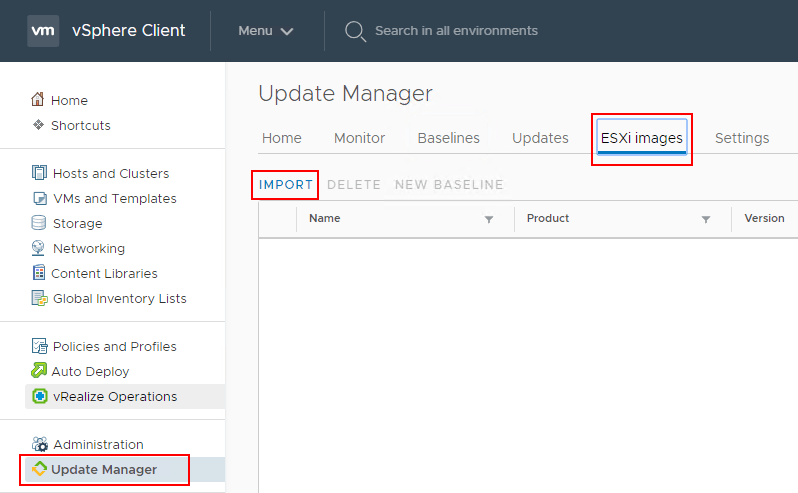
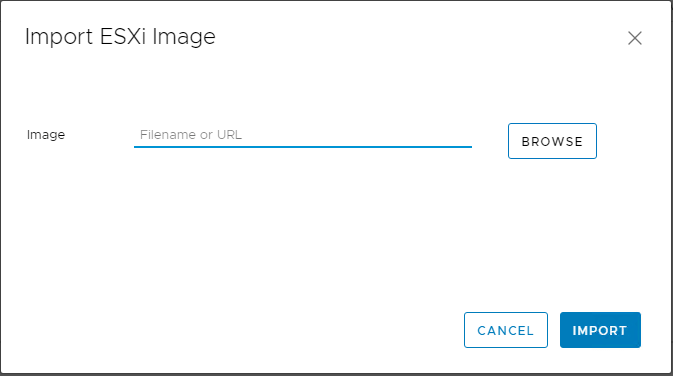
Choose to import an ESXi Image and Browse to the ISO file for ESXi 6.7 Update 1. As soon as you select it, it will start to import and then upload the image.
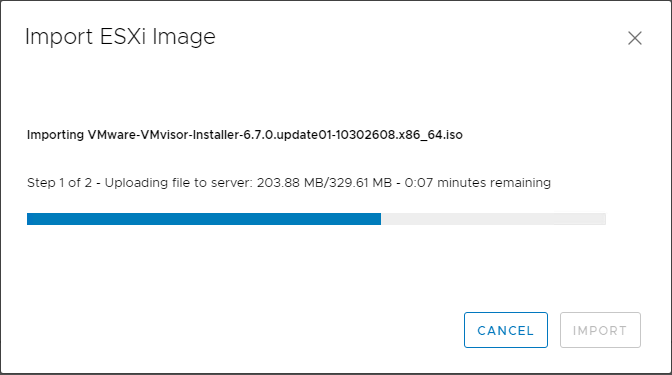
Below, the process to import the ESXi image has begun. The first step uploads the image and step 2 imports the image into the Update Manager images catalog.
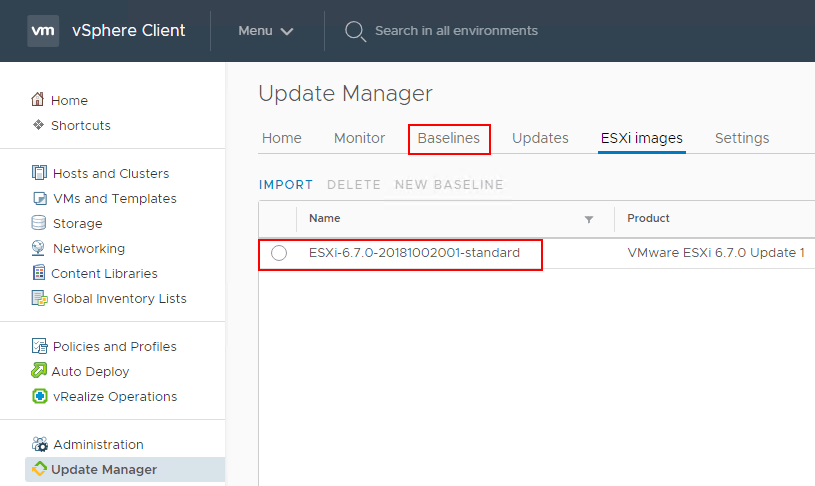
After the upload and import finishes, you should be able to see the ESXi image that was just uploaded under the ESXi Images tab.
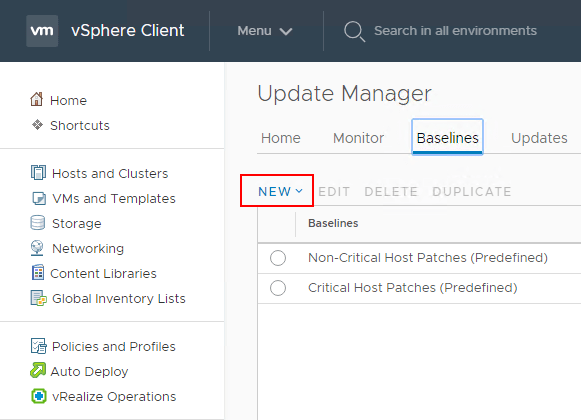
Now that the image is uploaded, we can create a new Baseline which allows assigning the action to a “template” of sorts for upgrading, updating, etc. The host has to meet the baseline by the scan operation or it will show out of compliance. Click Baselines >> New.
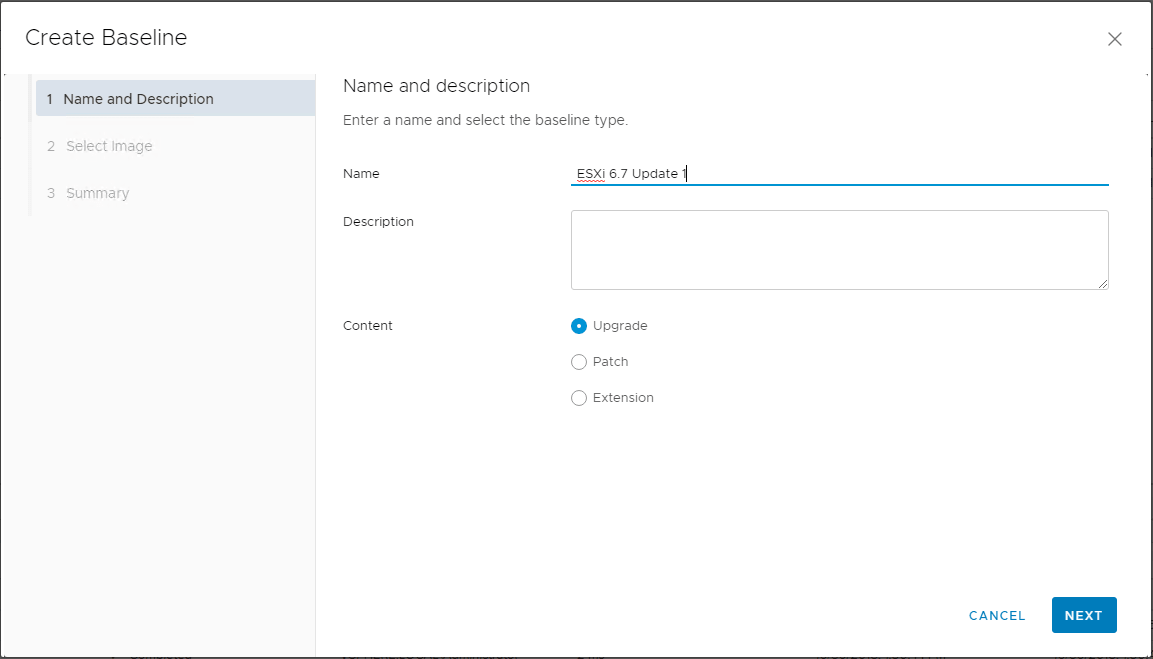
This will launch the Create Baseline wizard. The Create Baseline wizard is a 3-step process that will allow naming and setting the description for the baseline, selecting an image, and finalizing the baseline. Below, the Name for the Baseline is configured and the Content-type is set to Upgrade.
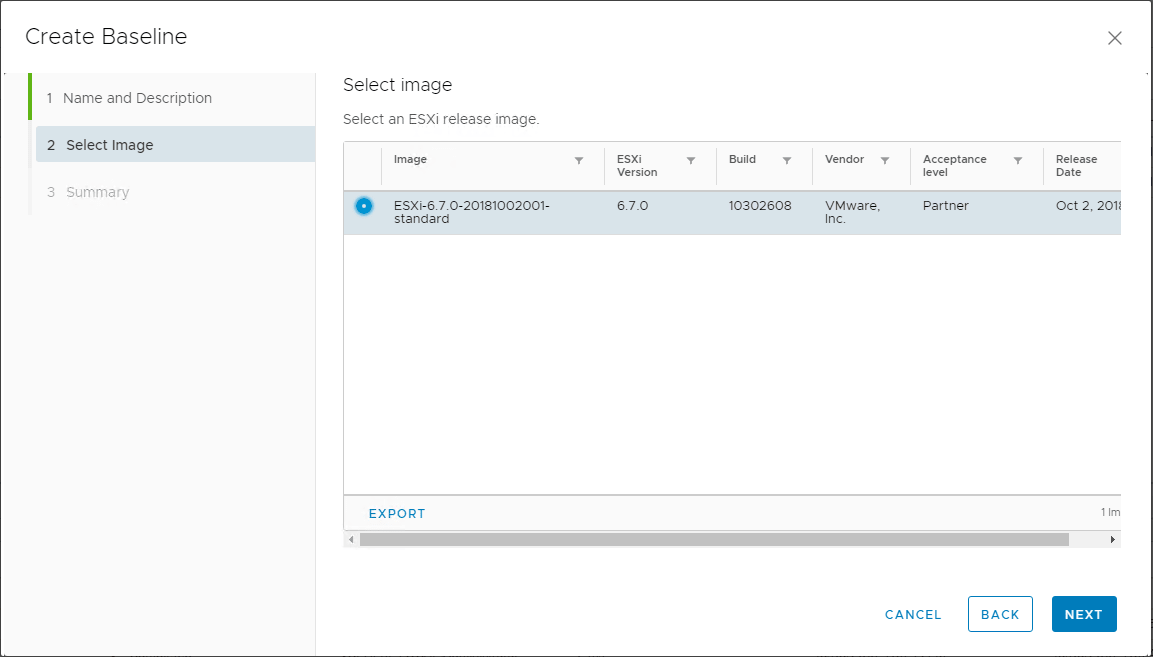
One step 2, select the image that was uploaded previously for ESXi 6.7 Update 1. You can identify this is Update 1 by the Build version which is 10302608.
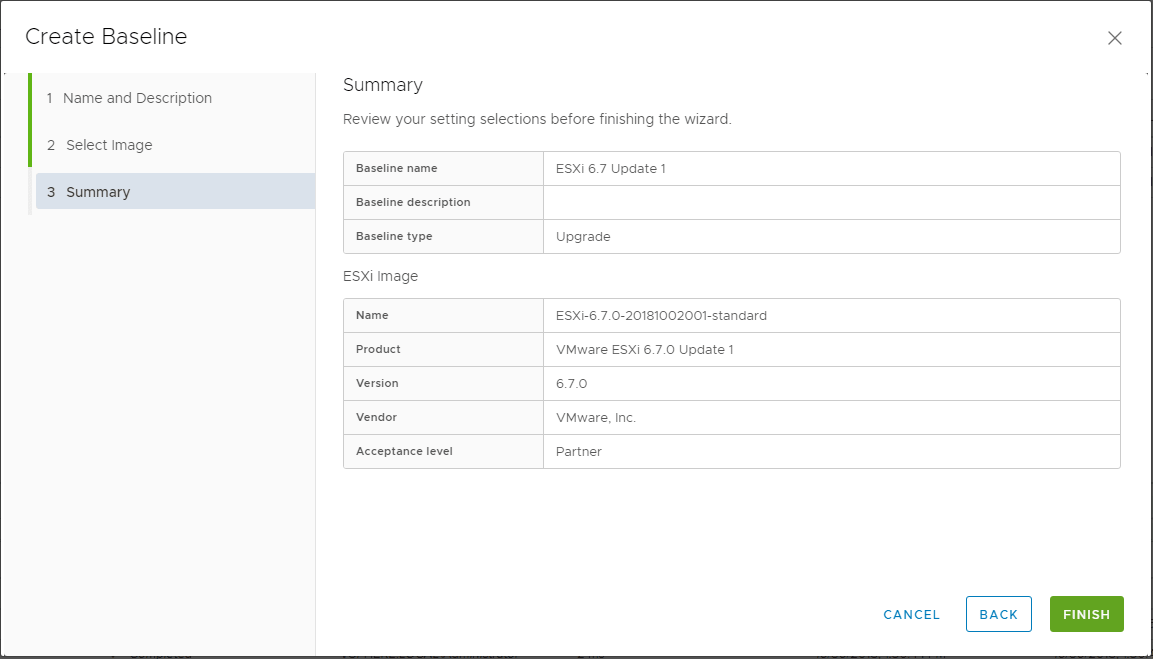
On the Summary screen, you can verify the baseline is configured correctly and then Finish the wizard to finalize the baseline creation.
Finalizing the new Upgrade Baseline to vSphere 6.7 Update 1
After the Baseline is created, you should be able to see the new Baseline listed in the Baselines listing.

Now that the vSphere ESXi 6.7 Update 1 ISO image has been uploaded and the new upgrade baseline for ESXi 6.7 Update 1 has been created, you can attach the baseline to the ESXi host that is to be remediated. To do this, select the host click Updates >> Host Updates >> Attach to select the newly created baseline.

On the Attach screen, select the newly created baseline that contains the Upgrade action to ESXi 6.7 Update 1.
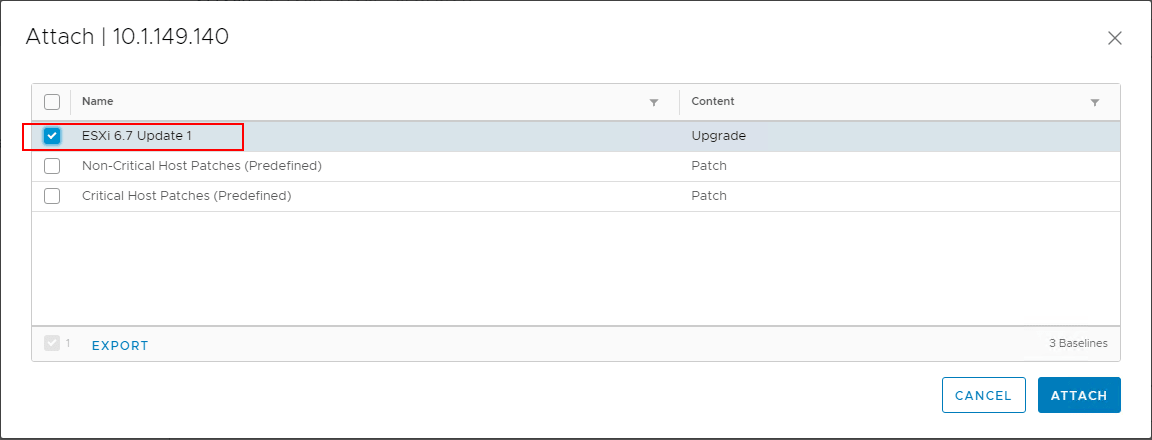
Next, choose the Remediate button under Updates >> Host Updates. This will allow the host to be scanned and remediated based on the attached baselines.
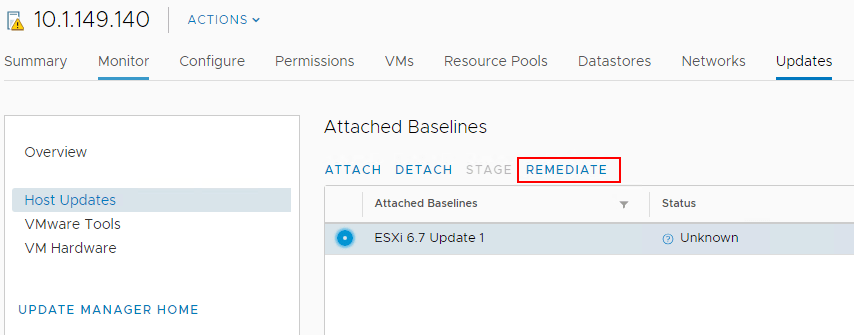
Once Remediate is clicked, the EULA for ESXi 6.7 Update 1 is displayed. Place a check in the box to accept the EULA and click OK.
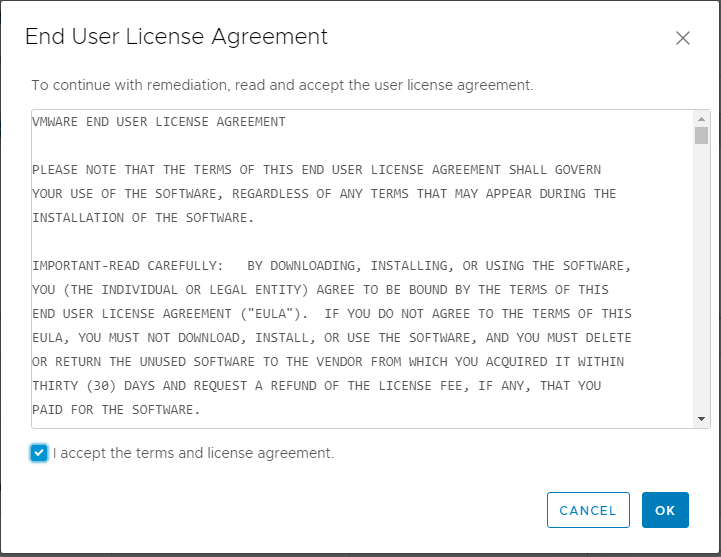
The Remediate screen is displayed for the host. The host will automatically be checked for remediating. At this point, you can simply click the Remediate button to begin the upgrade process or customize the remediate action further.

You can expand the various options on the bottom of the Remediate screen such as Scheduling Options and Remediation Settings. These allow configuring the scheduling of the upgrade as well as other remediation settings on the host itself.
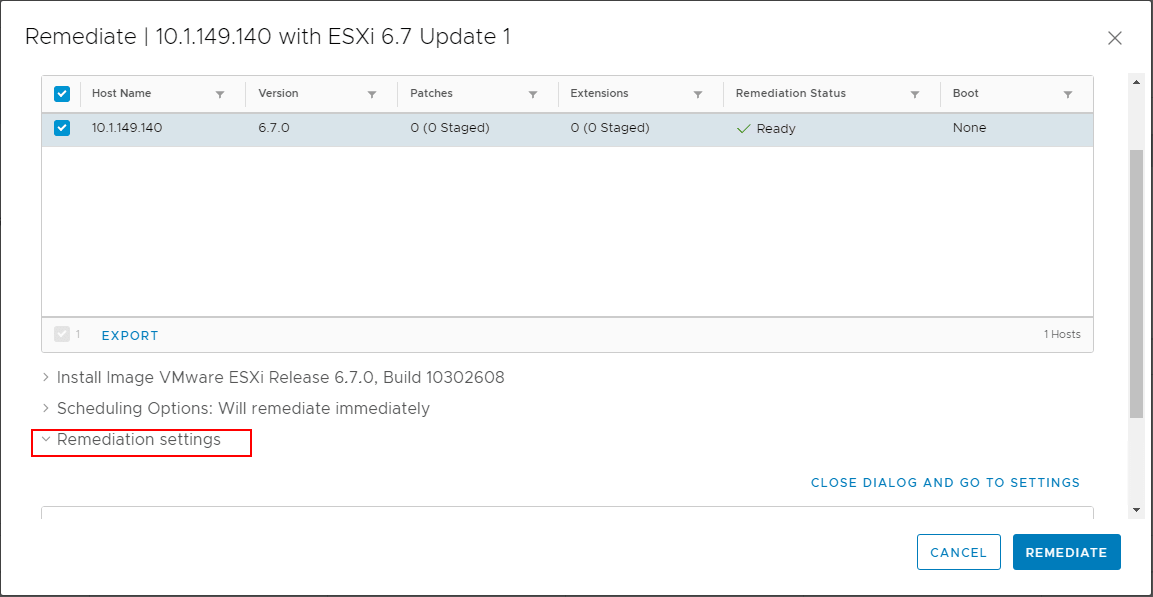
After clicking the Remediate button, you will see the Remediate entity action kick off in the Recent Tasks pane in vCenter Server.

The upgrade process will automatically reboot the host in question. After the host reboots, you can take the host out of maintenance mode and verify the Hypervisor version under the Summary tab. The version should reflect VMware ESXi, 6.7.0, 10302608. This is the build version for ESXi 6.7 Update 1.
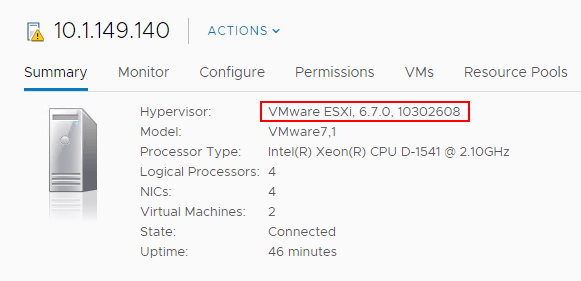
Concluding Thoughts
The new VMware vSphere 6.7 Update 1 version of vSphere is a powerful new offering from VMware. It represents all the latest and greatest technology from arguably the leader in the enterprise virtualization space today. VMware has greatly improved many aspects of the UI since this is the first version that contains the fully functional HTML 5 client. The Update Manager, sporting the Clarity themed interface, performs and flows brilliantly. I found the process in vSphere 6.7 Update 1 to be even further streamlined when compared to previous versions of vSphere. As you can see in the post, the process involves only a few steps. These include uploading the new ESXi 6.7 Update 1 ISO image for updating the ESXi hosts, creating the baseline for applying to the hosts that contain the upgrade action to ESXi 6.7 Update 1, and then remediating the host using the upgrade baseline. The upgrade can also be scheduled which is a nice feature, although this is not a new feature. Organizations will certainly be looking closely at the vSphere 6.7 Update 1 version of vSphere to upgrade legacy vSphere versions. Using the new VCSA Upgrade Installer UI for upgrading vCenter, and then using the Update Manager to take care of ESXi hosts will make quick work of the entire process.
If you are looking for a reliable and cost-effective VMware backup and replication solution, then BDRSuite is a great option.
Follow our Twitter and Facebook feeds for new releases, updates, insightful posts and more.



Leave A Comment